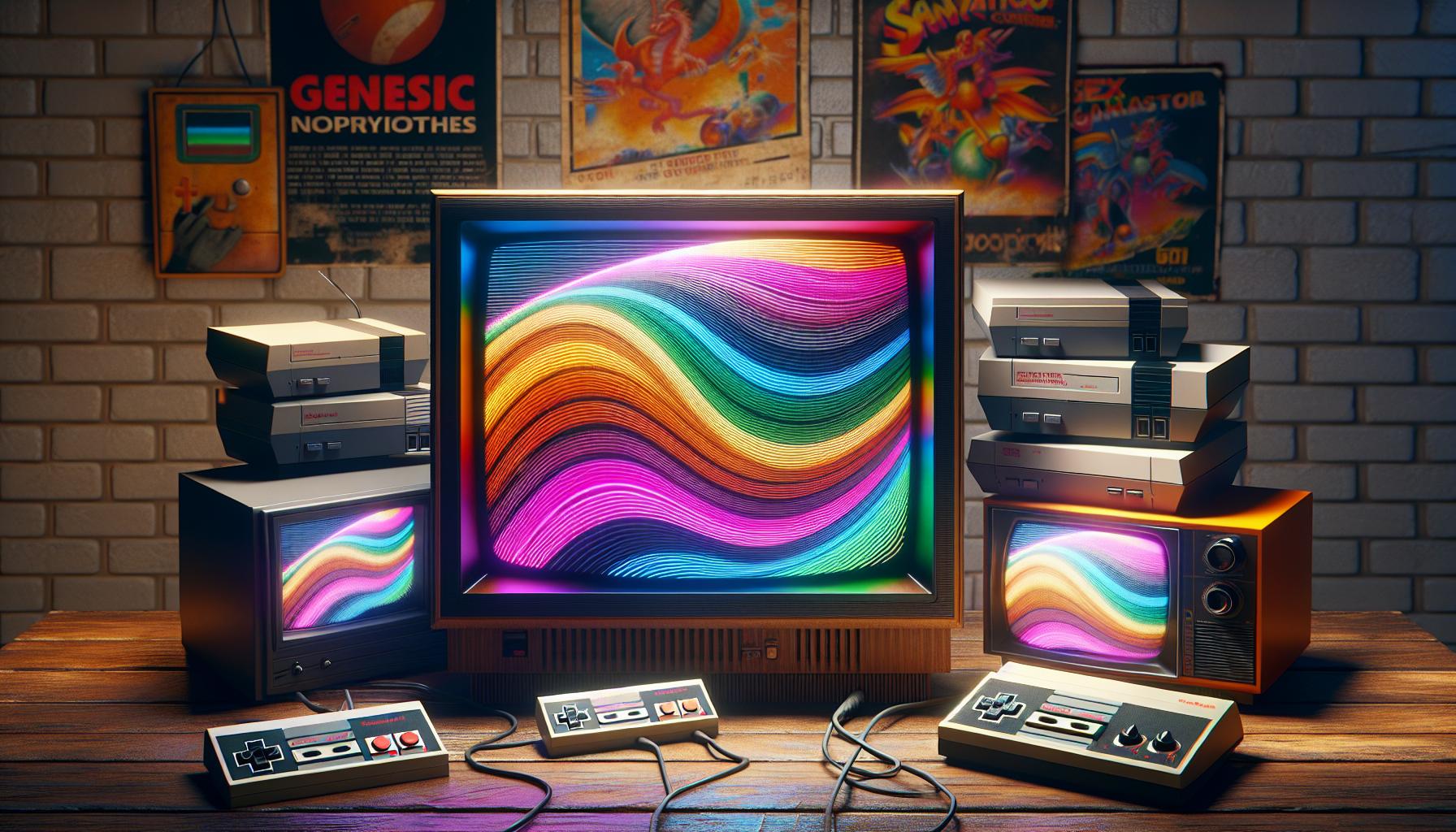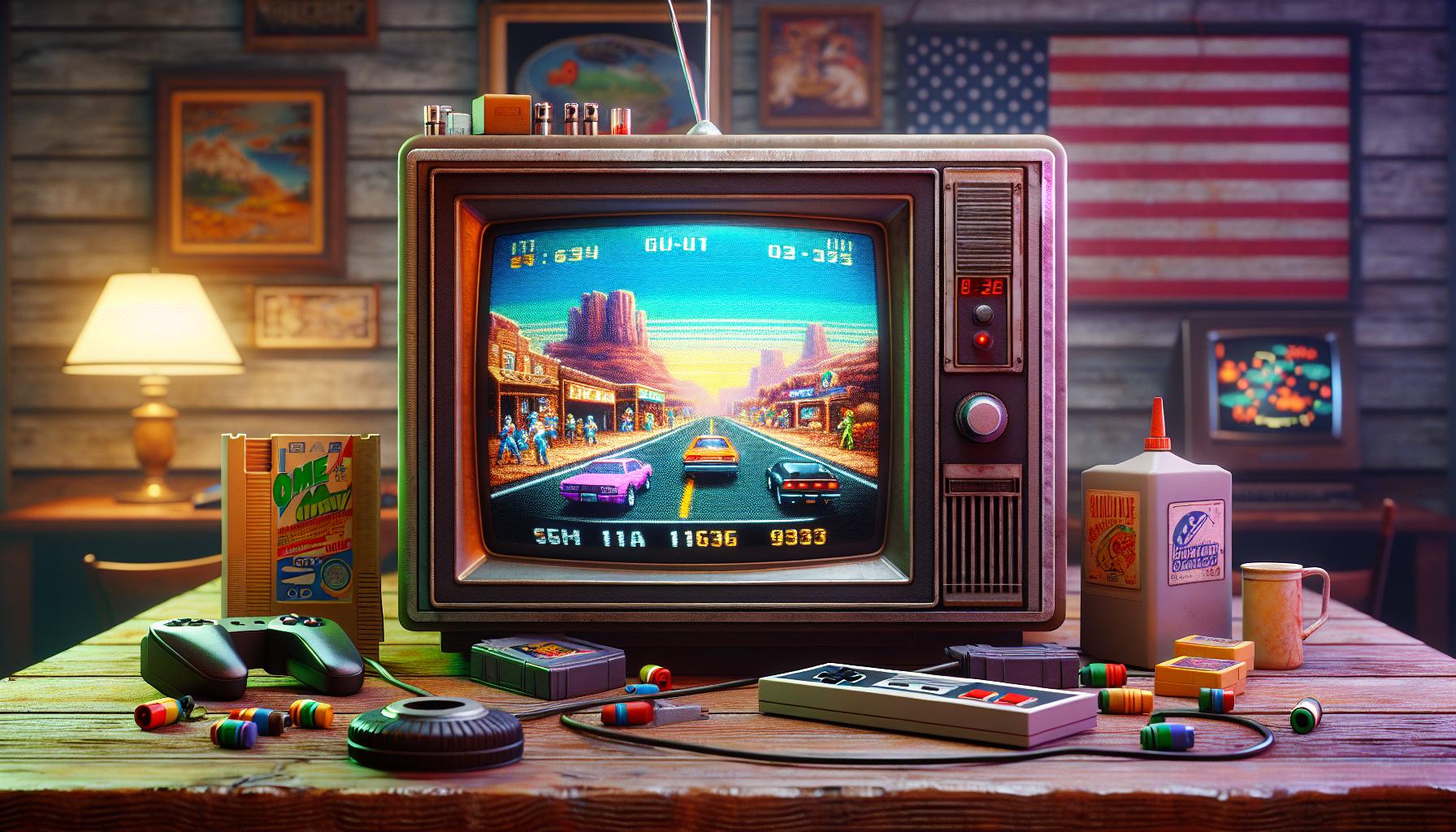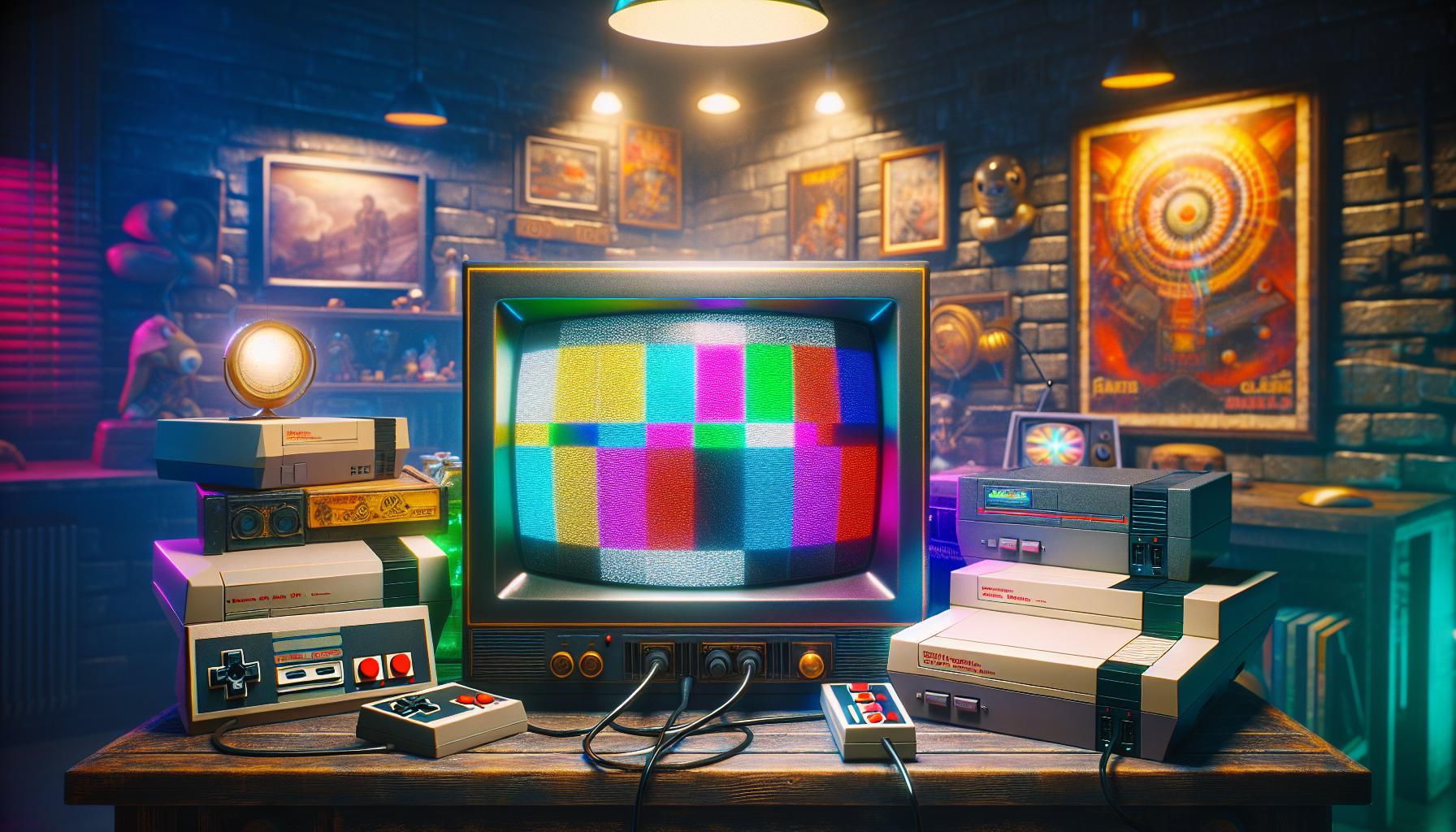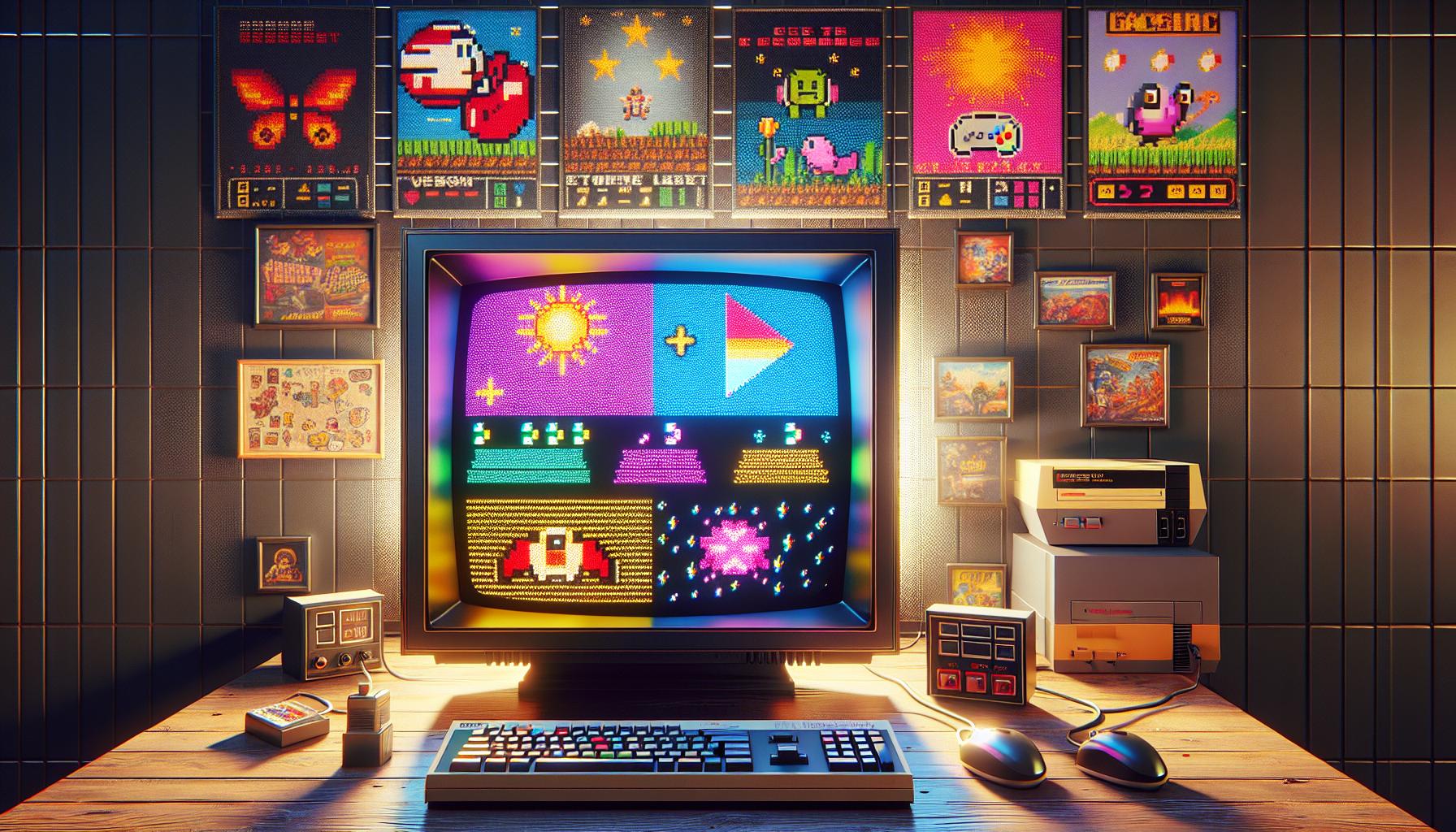
Remember the golden age of gaming when pixels were chunky and screens had that perfect curve? Modern gamers might chase ultra-wide displays but true enthusiasts know there’s something magical about playing classic games on a retro gaming monitor.
From the iconic Sony PVM to the beloved JVC monitors these vintage displays deliver an authentic gaming experience that modern screens just can’t match. With their superior color reproduction scanlines and zero input lag they’re not just nostalgic toys – they’re precision instruments that make games look exactly as developers intended back in the day.
Want to experience Super Mario Bros Sonic the Hedgehog or Street Fighter II the way they were meant to be played? A retro gaming monitor isn’t just a display – it’s a time machine that’ll transport you back to gaming’s most defining era.
Retro Gaming Monitor
Retro gaming monitors require specific technical specifications to deliver an authentic gaming experience. These characteristics ensure classic games display correctly while maintaining their original visual appeal.
Resolution and Aspect Ratio Requirements
Classic gaming monitors support native 240p resolution, matching the original output of retro consoles. Most vintage games use a 4:3 aspect ratio, maintaining square pixels for proper image geometry. Modern displays often struggle with 240p signals, creating scaling artifacts or incorrect aspect ratios. CRT monitors excel at displaying multiple resolutions without degrading image quality due to their analog nature.
| Resolution Type | Aspect Ratio | Common Use Cases |
|---|---|---|
| 240p | 4:3 | 8-bit/16-bit consoles |
| 480i | 4:3 | PlayStation/N64 |
| 480p | 4:3 | Dreamcast/GameCube |
Input Lag and Response Time
CRT monitors process signals instantly, creating zero input lag for responsive gameplay. Modern LCD displays add 1-2 frames of delay through digital processing. Professional gaming monitors (PVMs) offer sub-1ms response times, eliminating motion blur during fast-paced games. The instant pixel response of CRT phosphors produces crisp movement without ghosting effects. Testing reveals CRT displays maintain consistent input latency across different refresh rates.
| Display Type | Input Lag | Response Time |
|---|---|---|
| CRT | 0ms | <1ms |
| LCD | 16-33ms | 1-5ms |
| PVM | 0ms | <0.5ms |
CRT vs LCD for Classic Gaming

CRT monitors deliver superior performance for retro gaming compared to LCD displays. The fundamental differences between these technologies create distinct advantages for classic gaming experiences.
The Benefits of CRT Technology
CRT displays generate images through electron beams striking phosphor-coated screens, producing authentic scanlines that enhance pixel clarity in classic games. The phosphor-based display method creates true blacks with infinite contrast ratios, enabling vibrant colors that pop off the screen. CRT monitors handle multiple resolutions natively, displaying 240p content perfectly without scaling artifacts. The instant pixel response time eliminates motion blur, making fast-paced games like Street Fighter II appear crisp during rapid movements. The zero input lag ensures immediate response to button presses, essential for precise gameplay in platformers like Mega Man or shoot-em-ups like R-Type.
Modern LCD Alternatives
LCD monitors offer practical alternatives through specialized scaling solutions that emulate CRT characteristics. RetroTINK upscalers convert classic console outputs to work with modern displays while minimizing input lag. OLED panels provide deep blacks matching CRT levels with superior contrast ratios exceeding 1,000,000:1. Gaming-focused LCD monitors featuring black frame insertion reduce motion blur to approximate CRT motion clarity. Many modern displays include built-in scanline filters to recreate the classic CRT look. Custom firmware modifications enable some LCD monitors to process 240p signals properly, though with slightly higher input lag than CRTs.
Essential Features in a Retro Gaming Monitor

Retro gaming monitors require specific features to deliver authentic classic gaming experiences. These features enhance visual quality while maintaining period-accurate display characteristics.
Scanline Support
Scanlines create authentic visual spacing between pixel rows on retro gaming monitors. Professional video monitors (PVMs) generate distinct horizontal lines that replicate the original display technology of classic gaming consoles. CRT monitors produce natural scanlines at 240p resolution, creating sharp separation between scan lines for enhanced image clarity. Modern gaming monitors incorporate scanline simulation features through specialized firmware or external processors like RetroTINK to emulate this classic effect.
- RGB SCART for European gaming systems
- Component YPbPr for 6th generation consoles
- Composite video for 8-bit 16-bit systems
- BNC inputs for professional video equipment
Best Monitor Options for Different Gaming Eras

Selecting the appropriate monitor for specific gaming eras enhances authenticity through accurate display characteristics. Different console generations require distinct display technologies to showcase games as originally intended.
8-bit and 16-bit Era Displays
Consumer-grade CRT TVs with RF or composite inputs provide authentic experiences for Nintendo Entertainment System (NES) and Super Nintendo (SNES) games. Professional Video Monitors (PVMs) excel at displaying 240p content from these systems through RGB SCART connections. Sony PVM-20M2MDU models feature aperture grille tubes that produce deep blacks and vibrant colors ideal for platforms like Sega Genesis. JVC monitors equipped with S-Video inputs deliver sharper image quality compared to standard composite connections while maintaining period-accurate display characteristics. These displays generate natural scanlines at 240p resolution creating visual separation between pixel rows essential for 8-bit and 16-bit sprite-based graphics.
32-bit and Beyond
PlayStation and Nintendo 64 games benefit from professional monitors supporting RGB and component video inputs. Sony BVM-D series monitors handle multiple resolutions including 240p 480i and 480p making them versatile for 32-bit to 128-bit consoles. Toshiba AF series aperture grille displays offer excellent geometry correction options crucial for 3D polygon-based games. Modern processors like OSSC and RetroTINK enable using newer displays with classic consoles through zero-lag upscaling. Gaming-focused LCD monitors with black frame insertion technology approximate CRT motion clarity for systems up to sixth generation consoles. BVM-20F1U models provide top-tier image quality through professional-grade BNC connections supporting advanced color calibration for accurate reproduction.
Setting Up Your Retro Gaming Display
Optimizing a retro gaming display involves precise calibration adjustments and appropriate cable connections. Proper setup ensures authentic visuals and minimal input lag for classic gaming systems.
Proper Calibration Tips
Calibrating a retro gaming monitor starts with adjusting brightness levels to 37-42 nits for optimal contrast. Geometric settings require fine-tuning to eliminate picture distortion, including:
- Centering the display using crosshatch patterns
- Adjusting vertical size to eliminate overscan
- Setting convergence to align RGB elements
- Configuring color temperature to 6500K
- Reducing edge geometry issues with linearity controls
Color accuracy improves through sequential adjustments of contrast, saturation and hue controls. Testing multiple games ensures consistent display quality across different console generations.
Cable and Converter Requirements
Different gaming systems require specific cable types for optimal video output:
- RGB SCART cables connect European consoles directly
- Component YPbPr supports 480p through 1080i resolutions
- S-Video offers enhanced clarity for SNES and N64
- BNC connectors provide secure professional connections
- HD Retrovision cables deliver RGB quality through component inputs
| Processor | Input Lag | Max Resolution |
|---|---|---|
| OSSC | 0.4ms | 1200p |
| RetroTINK-5X | 0.1ms | 1440p |
| Framemeister | 1.5ms | 1080p |
Experience Gaming History
Retro gaming monitors remain an essential component for enthusiasts seeking the most authentic classic gaming experience. While modern displays offer convenience and practicality CRT monitors and professional video displays like PVMs deliver unmatched performance in terms of response time color accuracy and scanline reproduction.
Whether choosing a vintage CRT or a modern LCD with specialized scaling solutions gamers can find the perfect display to match their preferred gaming era. The key lies in understanding the technical requirements and making informed decisions based on specific gaming needs.
The golden age of gaming lives on through these carefully selected displays ensuring that classic titles can be enjoyed exactly as their creators intended. With the right monitor setup enthusiasts can truly step back in time and experience gaming history in its purest form.
